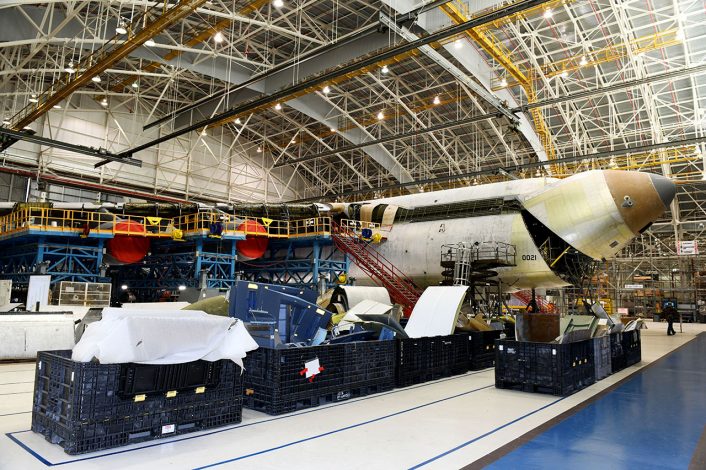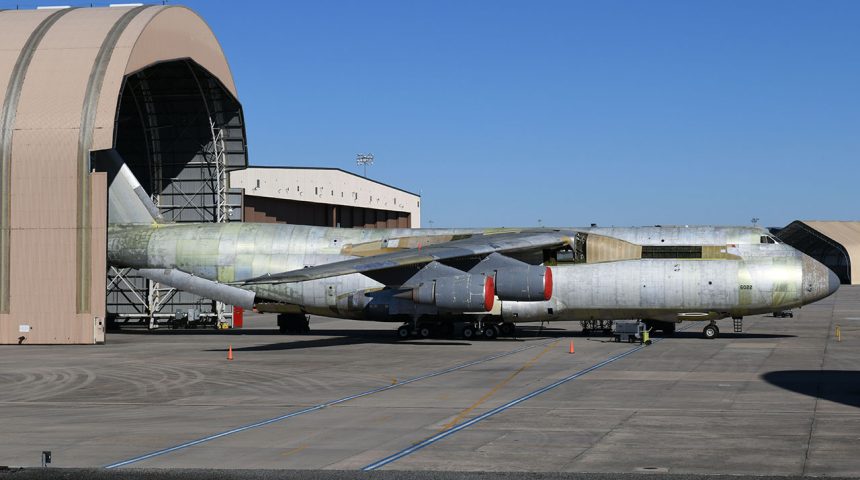Aircraft undergoing Programmed Depot Maintenance are almost completely disassembled, stripped off the paint.
Last week we published the first video of the B-52 tail number 60-0034, nicknamed “Wise Guy”, flying again after undergoing Programmed Depot Maintenance (PDM) at Tinker Air Force Base, Oklahoma. As many of our readers noticed, the Stratofortress bomber was completely “naked”, with all the paint stripped off. Although “Wise Guy” is an aircraft that was resurrected, regenerated and is about to return to service with the 5th Bomb Wing at Minot Air Force Base, North Dakota, after spending 10 years at the Boneyard of the 309th AMARG (Aerospace Maintenance and Regeneration Group) at Davis-Monthan AFB, Arizona, all types undergoing PDM, including C-5M Super Galaxy airlifters, the U.S. Air Force largest aircraft, are disassembled and stripped off their paint.
PDM is a very complex process made of heavy checks, during which the aircraft (at different intervals depending on the type) is almost completely disassembled and each part is inspected and all defects are fixed before they are rebuilt and sent back to their home stations as they were (almost) brand new. The paint is stripped off the entire airframe so that technicians can analyze every part of the aircraft and make repairs where needed.
The top image shows a C-5 reassembled after a PDM with the 402nd Aircraft Maintenance Group at Robins Air Force Base, Georgia. As part of the Warner Robins Air Logistics Complex, the 402nd AMXG provides PDM and unscheduled repair activities on F-15, C-130, C-5 and C-17 aircraft. The group is responsible for the repair, modification, reclamation and rework of over 200 aircraft worldwide.
The C-5 has an 8-year scheduled maintenance timeline: a PDM is performed every 96 months. In an effort to maximize the lifespan of the C-5 fleet, the aircraft goes through a series of inspections that vary in recurrence and depth: preflight, home-station check, Maintenance Steering Group-3 Minor, MSG-3 Major and Programmed Depot Maintenance.
The cycle goes as such: PDM, Minor ISO (Isochronal) , Major ISO, Minor ISO then starting back at PDM. Each inspection is two years apart and continues for the lifecycle of the weapon system. Dover Air Force Base and its 436th Maintenance Squadro has the only facility in the Air Force that is able to conduct Major ISO inspections. The PDM is carried out at Robins AFB. The aircraft is not only stripped down during PDMs: during an ISO inspection, aircraft maintainers strip down the C-5 looking for any deficiencies, faults, cracks or any other problem in every system of the aircraft.










